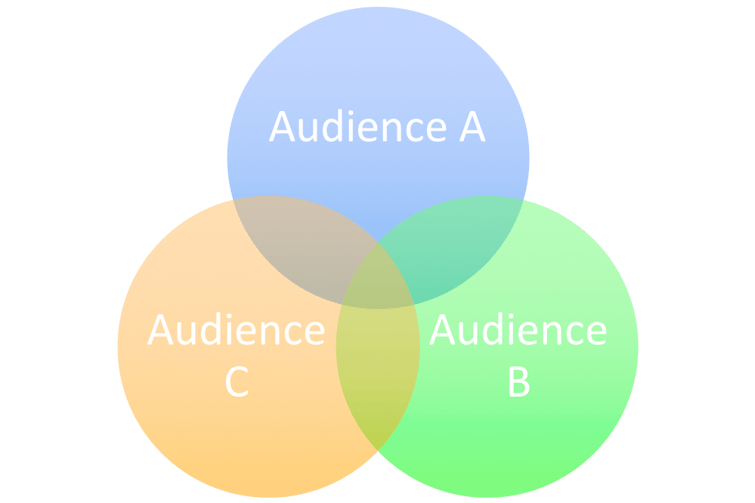What We’ve Learned After 12 Months of Social Media Promotions: A Handy Reference for Enrollment Managers

July 18, 2019

It’s social media… your prospective students are all over it, but your enrollment marketing team can’t seem to generate inquiries, leads, or students from social in the way that you’d like them to.
You know that social media should be a central part of your team’s approach to student recruitment, but right now you’re stuck. You may be occasionally posting content across your social channels, but what’s the point if no one ever sees it?
Don’t worry, we’re here to help.
Over the last 12 months of experimenting with our clients, here’s what we found to be true for universities that are struggling to get results from social media:
- It’s not about how much you spend.
- Targeting is your biggest asset.
- You need conversion-centric content.
- Without a strategy and goals, you lose purpose.
- Adapt to change or get lost in the shuffle.
It's not about how much you spend
You may have heard organic reach on Facebook is expected to reach zero rather soon, so we aren’t saying don’t spend any money. These platforms are certainly pay-to-play, but that doesn’t mean you need to drop Nike-type money in order to drive traffic and get conversions. As a matter of fact, you can absolutely make do with a few hundred dollars a month and a couple smart people.
For example, if you post to your blog once a week and have premium content like eBooks handy, your typical month’s spend could look like this:
- Boost each blog post for 4 days, spending $35
- Each week have an ad running to an eBook or blog subscription page, spending $50
- That puts your total monthly spend at $340 – pretty cheap in the social world!
How does this work for getting conversions? Let’s circle back to the comment about having a couple smart people. What do these smart people know that you may not? How to target qualified users.
Targeting is your biggest asset
Some marketers will spend a blasphemous amount of money on one ad and then think it was successful because they generated a high number of impressions. But there’s a secret I’m going to let you in on that is really important to burn into your brain when it comes to social media marketing:
Impressions mean nothing – yes, nothing.
So, if impressions don’t matter then what should you care about? Reach, clicks, and conversions (reach is NOT impressions). We’re not saying that more is better either. We want quality over quantity, and you get that quality through detailed targeting.
Example:
Your team just created an amazing eBook titled The ROI of an Advanced Business Degree. Who do you target on social media?
Those smart people on your team should use “and statements” to refine your audience and make users go through multiple filters to ensure you’re getting the highest quality clicks.
Here’s what we would do:

These targeting criteria clearly target potential graduate students, who have not received a master’s degree, who are interested in a variety of business publications, AND are in college or a college graduate who holds any of the following job titles.
But, to make all this work, you first need content that allows and entices potential applicants to convert, giving you their name, email, and program of interest.
You need conversion-centric content
It’s safe to say that everyone and their mother has heard of content marketing by now. Most universities and programs understand the need to produce content that suspects and prospects can consume as they get to know the school.
But content marketing alone is not enough. You need conversion-centric content.
We’ll break it down for you:
Content: emails, blog posts, landing pages, pillar pages, social posts, and the list goes on.
Conversion-centric: the primary goal of acquiring a user’s personal information via a voluntary form submission.
Combine the two definitions and you get conversion-centric content! Let’s assume you have this content already created, but maybe it’s not optimized for conversions. Step one, slap a form on the side of that blog post or gate your eBooks with a form before letting site visitors read through your long-form content.
Now, let’s assume you have done all that and your content is conversion-centric – here’s why you need this for social promotions.
When you launch a social advertisement, the people seeing it may have never seen or heard of your university before (technically, they are just suspects at this stage, since you don’t really know who they are). The content you drive them to should provide them with pathways to continue exploring your site, consuming content along the way (and thus becoming prospects), and ultimately lead them to inquire or apply.
This doesn’t all occur in one sitting, but if your content resonates with them and they convert on a landing page or subscribe to your blog, you now have their name and email in your database and can begin nurturing them via email.
Just pushing out form-less content or photos of cute puppies won’t help you acquire prospective students from social ads – you need a way to contact and nurture them. Buying names from outside lists is often very expensive and isn’t always the most reliable.
Why not attract qualified site visitors via stellar social media targeting and conversion-centric content combined with a big picture strategy and goals?
Without a strategy and goals you lose purpose
“Shoot for the stars” is not a strategy or a goal, unless you develop a plan to get to space and then assign the stars a numerical value. Social media promotions work the same way, and should intertwine with the much larger goals set by your enrollment management/marketing team.
If your team is aiming for “as many conversions as we can get,” you’ll be complacent about your student recruitment numbers, whatever they are, since you had no real goal to begin with. Nobody benefits from that – and ultimately your university will fall behind.
Setting numerical goals for social promotions is crucial to success, but more importantly, to growth. These goals will fluctuate based on the content offer--i.e. start an application, inquire, register for an event, download content, subscribe to the blog, etc.--but it’s still important to have a measurable objective you’re trying to reach.
So how do goals shape your social strategy? A social strategy is much different than an email strategy, so treat it that way and give it the same amount of – if not more – thought than you would your email campaigns.
It will vary based on the campaign, but let’s use an event to demonstrate.
Example:
Your university is hosting a Lunch & Learn for prospective Interior Design students and you want to attract X amount new people via social media.
Here’s what we would do:

- First, we launch a social promotion that links to a guide about interior design, but also includes a video that outlines the highlights of the guide.
- A week later, we take people who watched more than 10 seconds of the original video and promote the guide to them with an image, in the hope that they will recognize the offer, and this time they’ll download the guide.
- Following that promotion, we gather people who clicked to the ad and watched 10+ seconds of the video and send them an ad to event landing page.
Results:
Using these tactics, we increased RSVPs from social media by over 130% and increased our new contact conversions from social by 50%. We now refer to this strategy as “social nurturing” which has continued to be successful for a variety of events and content offers.
The point of it all is that without goals and a strategy you’re happy with any new contacts you get, rather than striving for a number that should be hard to reach.
Coming up short of an aggressive goal is far superior to not setting a goal and getting a few people here and there. Goals and strategies aren’t static, and if you aren’t willing to take a step back a reevaluate, your marketing efforts will not be as efficient and successful as they could be.
Adapt to change or get lost in the shuffle
Social media is changing every day and you have a life outside of work, so how are you supposed to stay on top of all the latest marketing trends and then adapt accordingly (other than just reading The Minute)?
Adapting to change doesn’t mean making tweaks every time Facebook updates its platform – because even Zuckerberg can’t keep up with that – but it does mean looking at the data of your promotions and tinkering with aspects of it in search of better results. If you keep doing what you’ve always done, you’d still be putting all your marketing dollars in print ads and billboards – if you’re still doing this PLEASE give us a call right away.
One system we have created and used to try and find the most engaged audience is “target overlap.” Here’s a visual representation of what this looks like:

This overlap gives us better insight into what targeting criteria are working best and ultimately finding that golden nugget audience in the middle. This takes time, but once this core group is found, your traffic and conversions are much higher and more qualified than when you started.
The beast that is social media
Social media can seem overwhelming to some and just too big of an obstacle to overcome. We get it, it’s not easy and it requires time, but this is where student recruitment is taking place. Don’t get left in the dust and then start trying to put together a comprehensive social plan in order to play catch-up.
If you found this post useful and want some more information or have any questions please feel free to email me (shane@directdevelopment.com). I would be more than happy to chat and help you #SlayYourGiants in the digital world.
Are you an enrollment manager looking for a fresh take on marketing for student recruitment? If so, we invite you to check out our free digital resource: Everything Enrollment Managers Need to Know About Inbound Enrollment Marketing.
.jpg?width=286&height=190&name=sam%20and%20matt%20(1).jpg) EBOOK
EBOOK
See how schools are using HubSpot for their enrollment marketing
Service Categories: Enrollment Marketing, Digital Advertising, Social Media Marketing







.png)